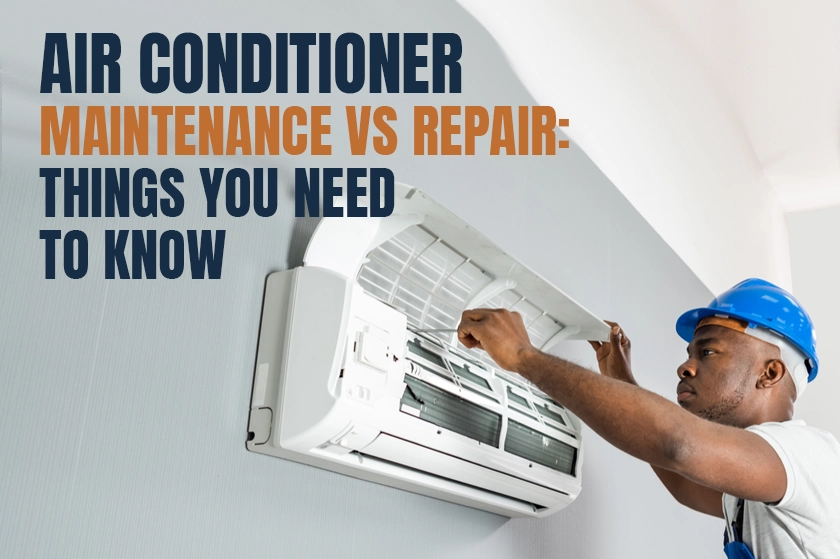As temperatures soar, your trusty air conditioner becomes a lifeline, ensuring a cool and comfortable living space. To keep it running efficiently, understanding the difference between AC maintenance and repair is crucial. Let’s dive into the essentials of AC upkeep to ensure your unit stays in top-notch condition.
THE IMPORTANCE OF REGULAR AC MAINTENANCE

1. Preventive Measures Save Money and Stress
Regular maintenance is akin to a health checkup for your AC. By scheduling routine inspections, you catch potential issues before they escalate into major problems. This not only saves you from expensive repairs but also ensures your unit operates at peak efficiency, reducing energy bills.
2. Extended Lifespan
Just as a well-maintained car lasts longer, the same principle applies to air conditioners. Cleaning filters, checking refrigerant levels, and inspecting electrical components can significantly extend the lifespan of your AC, providing reliable cooling for years to come.
3. Improved Air Quality
A neglected AC can harbor dust, mold, and allergens, impacting indoor air quality. Regular maintenance includes cleaning and replacing filters, preventing the circulation of pollutants. This is particularly important for people who have allergies or respiratory conditions.
4. Efficient Cooling Performance
Regular maintenance helps keep the various components of the AC system clean and in good condition. This, in turn, ensures that the unit operates at peak efficiency, providing effective and consistent cooling throughout your living or working spaces.
5. Compliance with Warranty Requirements
Many AC manufacturers require regular maintenance as a condition for honoring warranty agreements. Failing to adhere to these maintenance requirements could void the warranty, leaving you responsible for the full cost of any repairs or replacements.
SIGNS YOUR AC NEEDS REPAIR

1. Inadequate Cooling
If your AC struggles to cool your space despite being properly sized, there might be an issue. This could range from a refrigerant leak to a malfunctioning compressor. Professional intervention is necessary to diagnose and rectify the problem.
2. Unusual Noises
Banging, screeching, or grinding noises are red flags. These may indicate loose components, damaged belts, or a failing motor. Ignoring these sounds can lead to more extensive damage and costlier repairs.
3. Leaking Water
Any standing water around your air conditioning unit indicates a problem. It could be a blocked drain line, a malfunctioning pump, or a refrigerant leak. Prompt repair is essential to prevent water damage and mold growth.
4. Foul Odors
Unpleasant odors such as rotten onions emitted from the AC vents may indicate mold or mildew growth within the system, a dirty air filter, or issues with the drainage system. Addressing these issues is crucial for indoor air quality.
5. Frequent Cycling On and Off
Rapid and frequent cycling of the AC unit (short cycling) could be a sign of various issues, such as an oversized unit, a faulty thermostat, or problems with the compressor.
6. Visible Ice or Frost
Ice or frost on the evaporator coils or refrigerant lines may signal issues with airflow, refrigerant levels, or other components. It’s essential to address the cause of the freezing promptly.
6. Visible Ice or Frost
Ice or frost on the evaporator coils or refrigerant lines may signal issues with airflow, refrigerant levels, or other components. It’s essential to address the cause of the freezing promptly.
DIY AC MAINTENANCE TIPS

1. Regularly Clean or Replace Filters
Filters trap dust and debris, ensuring clean air circulation. Check and clean filters every 1-3 weeks, depending on usage.
2. Keep the Outdoor Unit Clean
Clear debris, leaves, and vegetation around the outdoor unit. This ensures optimal airflow and prevents overheating.
3. Inspect Thermostat Settings
To save energy, make sure your thermostat is adjusted properly and think about switching to a programmable model.























































